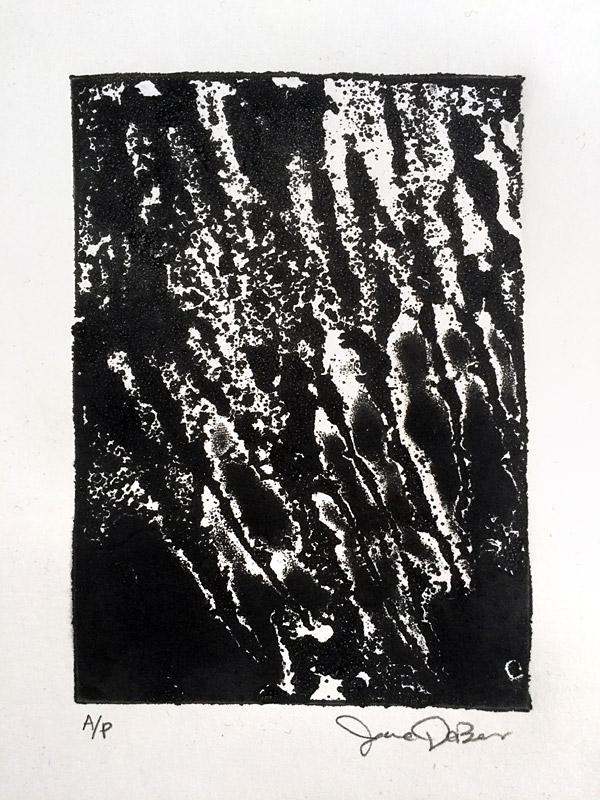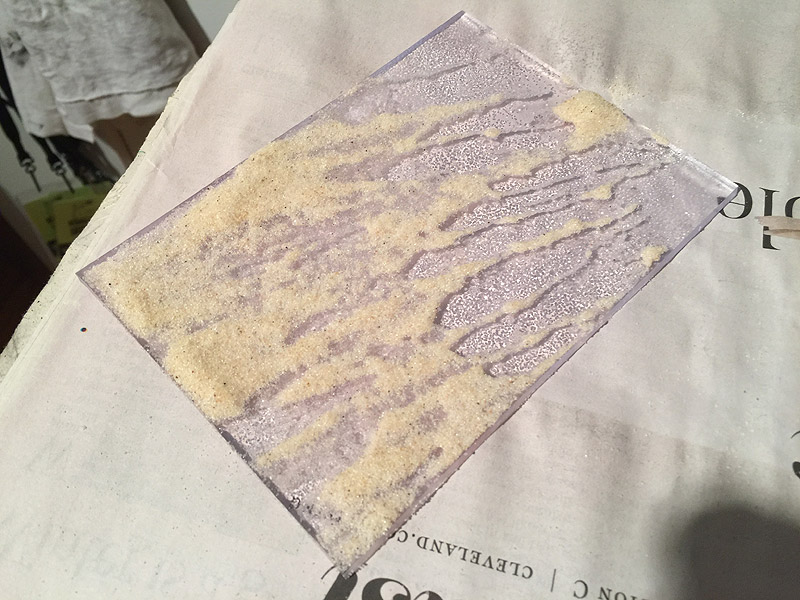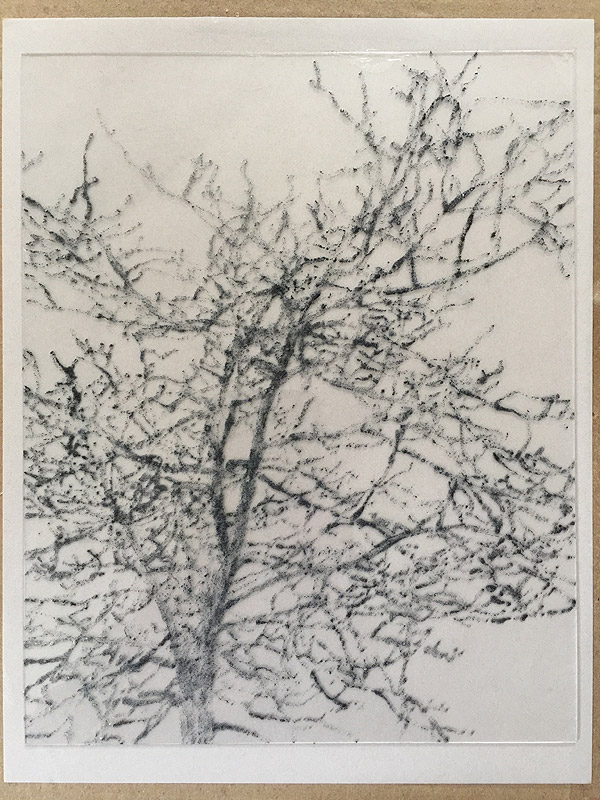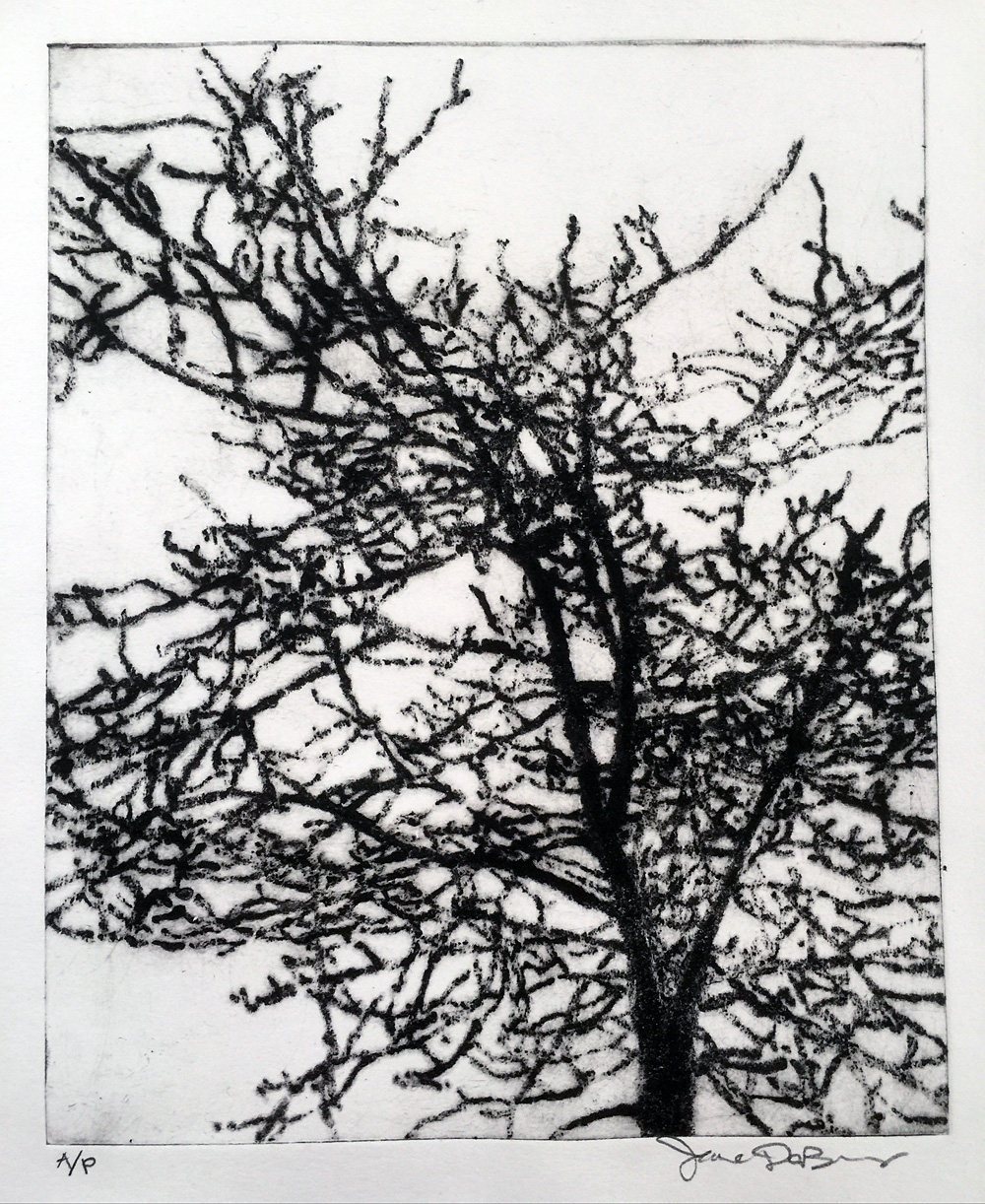prints, drawings, paintings, web development, blog posts, link to etsy shop
Outside Inspiration, More Collagraphs
Outside Inspiration, More Collagraphs
A few months ago, I read another artist's account of using carborundum to make collagraph prints. It was exactly what I had been looking for - a way to use carborundum differently than what others had been doing. Until I read this, most of what I'd found online about carborundum prints concerned two methods:
- painting or pouring glue on a collagraph substrate (cardboard or the like), then sprinkling carborundum on it and letting it dry
- painting the plate with glue and covering it with carborundum grit, then painting out the areas that should remain white
Both of these methods involved printing the collagraph as an intaglio plate. The problem I encountered was that I couldn't get the effect I was looking for and wiping ink from a plate covered with grit was akin to wiping sandpaper - it was shredding and destroying anything I used: tarlatan, newsprint, whatever. Even worse, bits of the wiping material would be left behind on the plate and had to be painstakingly removed before printing. If I tried to solve the problem by painting over the grit with a couple coats of acrylic varnish or gloss medium, the grit no longer held ink the way I needed it to, and there was no way to not "overwipe."
This was when I threw up my hands and in desperation switched to printing my carborundum and sand collagraphs as relief prints. It solved both problems - I got my desired effect AND no wiping.
Here's the newest of those prints followed by the plate I used to make it - this one used sand to hold ink:


But that didn't change the fact I still wanted to make intaglio prints from carborundum-based collagraphs!
The article linked above finally helped me with this. The artist made a multiple-color print using plates painted with grit mixed into acrylic gel medium. He varied the amount of grit to get different coverages of ink. Inspired, I decided to attempt a simple test in black and white - of one of my trees. Having the grit already suspended in the medium solved some of the problem I had with wiping the plate. It still had some sandpaper feel, but because the grit was slightly glazed, neither my tarlatan nor Akua wiping fabric was completely destroyed or left behind on the plate. (Newsprint was still right out.) The only problem was with the wiping fabric - I still had to be careful not to overwipe.
Here's an image of the plate before it was inked so you can see how the grit is distributed in the painted areas. I didn't really do much except paint on a plate because I wanted to get an idea of how the whole process worked and the consistency of the gel medium and grit. I used a tiny paintbrush and I went back over the darker areas with more of the grit-medium "paint" in hopes of holding more ink in those areas.

And here is the first proof after inking and wiping:

The lighter areas had a sparser distribution of grit and the dark areas had more. I still have a LOT to learn about this new method and I hope to work with multiple color plates in the future. I recently ordered etching ink in process colors to attempt a real color separation by hand. Stay tuned, I may talk about it right here.
